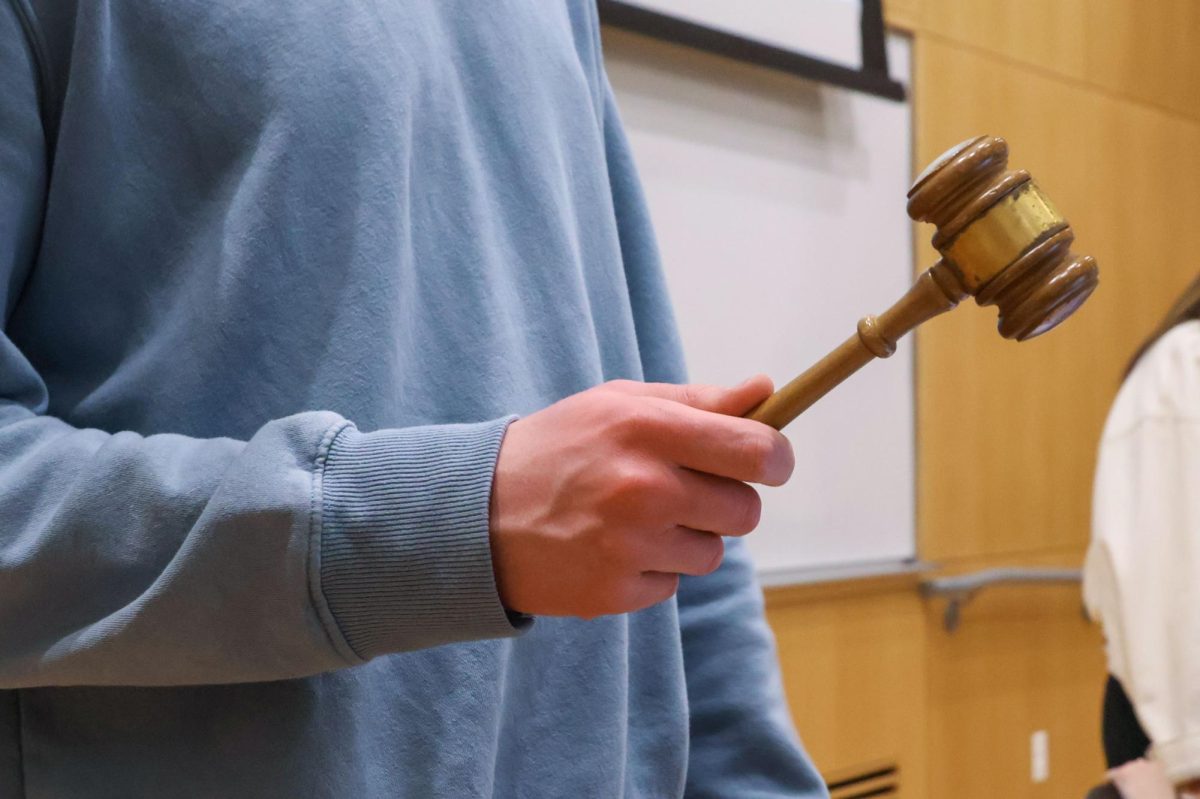An engineering professor, in partnership with the Smithsonian National Zoo, is studying the mechanisms sea lions use to move underwater to engineer more effective underwater motorized technology.
Megan Leftwich, an associate professor of mechanical and aerospace engineering, is conducting research about the mechanisms sea lions use to move underwater in an effort to engineer more flexible and maneuverable underwater vehicles. She said her team of researchers and collaborators at Drexel and West Chester universities study videotapes of sea lions swimming at the National Zoo to measure the flexibility of a sea lion’s body and water disturbance – factors the researchers hope to apply to the physical model of underwater drones and vehicles.
Leftwich said the maneuverability, speed and agility of sea lions, who can generate relatively higher levels of thrust in their body than other marine animals can make with their tails, makes them the perfect animal to study and replicate in underwater engineering. Sea lions clap their front flippers against their body to propel themselves forward and glide through the water, reaching speeds of up to 25 miles per hour.
Leftwich said the team is working to learn how sea lions move efficiently while not significantly disturbing the water around them, a feature that researchers hope to incorporate into underwater vehicles used to study sensitive areas of the ocean, like coral reefs that can break under force. She said a lower wake from the vehicles will let scientists more easily study underwater caves and coral reefs and collect materials without disturbing marine life.
“The way I think of it is that we are looking at how nature solves all of these problems and adding it to our engineering tool bag,” Leftwich said in an interview.
Leftwich said her team is currently studying fluid mechanics – a branch of physics measuring the forces of fluids – of sea lions to analyze the “thrust production” of the flippers. Leftwich said an improved understanding of the mechanics and flexibility of sea lions allows engineers to adapt the technology to the conditions of the ocean.
She said the Department of Defense granted her team a $1.3 million, three-year grant in January 2021 to support her research on “locomotion and transitions” of an amphibious system, and received a $380,000 installment of the grant to continue research last month.
Leftwich said she hopes to incorporate the sea lions’ ability to make sharp turns through thick California kelp forests into marine technology that can currently only take wide turns.
Leftwich said the Navy may be able to develop new technology to help detonate underwater bombs compatible with the flexibility of the sea lions, but prototypes of the vehicles are still in the works. She said the vehicles would replace human divers who must complete dangerous bomb missions for the military.
Leftwich said GW’s location allowed the team to collaborate with sea lion keepers at the National Zoo, so they could obtain detailed videos of the animals’ movements. She said her team used CAT-scan machines at GW Hospital to scan the flipper of a deceased sea lion last year from the National Zoo to better understand how a flipper’s stiffness and length contributes to the animal’s maneuverability and speed and help engineers apply it to small underwater vehicles.
“Just being in D.C. and being at GW, leveraging the scientific community that we live in, has really enhanced this project because obviously we can’t keep sea lions in the lab,” Leftwich said.
Co-investigators on the research team said the findings from the sea lions’ method of locomotion will result in bioengineering solutions, like new generations of robotic underwater vehicles.
Frank Fish, a co-principal investigator of the study and professor of biology at West Chester University, said the sea lion’s amphibious nature along with their speed and agility made them an ideal model for designing autonomous underwater vehicles, or AUVs.
He said mimicking the sea lion’s ability to move quickly through water with minimal disturbance to its environment would assist engineers in the development of the next generation of AUVs and engineer them to surf on the waves to easily transition from the shore to the water.
“These are particular attributes that we found to be quite interesting and want to try to build into a robotic system,” Fish said.
James Tangorra, a co-principal investigator of the study and the head of the Department of Engineering Leadership and Society at Drexel University, said the study employs bio-derived engineering – the application of biological techniques to create modified versions of organisms – to improve the performance of robotic underwater vehicles.
He said research on sea lion flippers and motion performed at GW and West Chester universities will guide the study’s engineers at Drexel to create robotic systems modeled after the sea lions’ movements.
“Once we understand the critical phenomena that are important to performance, we then adapt that to the engineered robot,” Tangorra said.
Harry Kwatny, a co-principal investigator of the study and professor emeritus of mechanical engineering and mechanics at Drexel University, said the researchers perform computer simulations of thousands of different swimming methods with AI tools to optimize the performance of the robot.
He said researchers compare the robot’s performance to the “optimal stroke” in films of real sea lion movement after researchers think they have optimized the swimming mechanisms in the simulations.
“The idea is to try to discover what the most efficient ways the robot can function underwater,” Kwatny said. “And we try to compare those results with what we see on visual movies that are taken underwater of sea lions.”
Keith Moored, an associate professor of mechanical engineering and mechanics at Lehigh University, said sea lions are “extraordinary” for their advanced flexibility and swiftness. He said using sea lions as a model can improve the performance of underwater autonomous vehicles.
“If we can create systems that swim the way animals swim, we can potentially have much better performing devices,” Moored said. “Something that can be fast and efficient, like traditional vehicles, but also highly maneuverable and agile.”
Rory Quealy contributed reporting.








